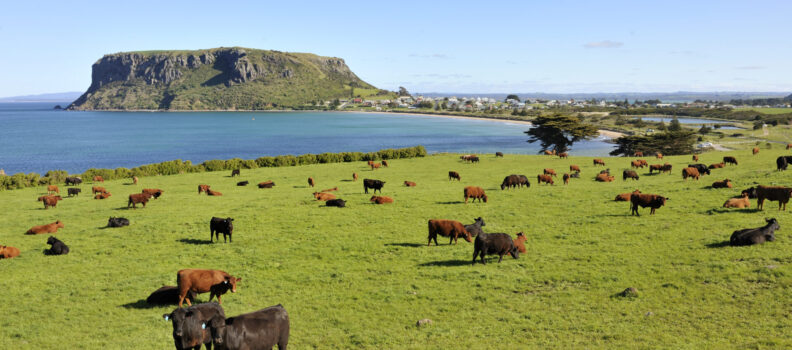Understanding copper deficiency in coastal country livestock

Copper is one of two essential trace elements that can be stored in the fatty tissue surrounding the organs of ruminants, the other being selenium. Because copper can accumulate in the body, overdosing through supplementation can lead to toxicity. However, the more common challenge across many grazing regions, particularly coastal country, is deficiency.
Why copper deficiency occurs
The most obvious reason for low copper levels is a lack of available copper in the soil, which limits uptake by plants and, in turn, the animals grazing on them. However, the less obvious and often more significant causes are trace element interactions and soil imbalances.
A key example is molybdenum (often referred to as a “copper antagonist”), which interacts with sulphur in the rumen to form thiomolybdates. These compounds bind to copper, making it insoluble and therefore unavailable for absorption or storage. As a result, even when animals are consuming adequate dietary copper, blood and liver levels can fall, a condition known as secondary copper deficiency.
Did you know?
High molybdenum levels are common in coastal or limed soils. When molybdenum combines with sulphur, it locks up copper in the rumen, preventing proper absorption and storage.
Recognising the signs
Copper deficiency can manifest differently between species, but some tell-tale signs include:
- Cattle: A dull, rusty coat colour and “fuzzy” hair that sticks up.
- Sheep: Wool that develops a “steely” or harsh texture.
Deficiencies can also lead to reduced fertility, poor immune function, and lowered growth and production rates, all of which have a direct financial impact. These imbalances are far more common than most producers realise, and can be influenced by seasonal conditions, rainfall patterns, soil type, and management practices.
The Beachport approach
To address both the cause and efficiency of supplementation, Beachport Liquid Minerals products are designed to bypass the rumen and be absorbed directly through the first section of the small intestine.
Once in the bloodstream, nutrients are slowly broken down and released over a six-week period, providing similar benefits to injections but without the drawbacks.
Delivering trace elements through the water supply ensures:
- Consistent, stress-free supplementation
- Improved animal welfare, no painful injection sites
- Reduced labour and handling, no mustering required
This method allows livestock to receive nutrients naturally each day through their drinking behaviour.
Overcoming the molybdenum effect
Beachport formulations are uniquely designed to manage molybdenum interference through bioavailable delivery, synergistic trace element balance, and amino acid support.
They help maintain optimal copper levels by:
- Reducing rumen lock-up
- Improving copper absorption and utilisation
- Supporting overall mineral balance
- Enhancing fertility, coat, and wool condition
“Beachport Liquid Minerals Blue Cap and White Cap helps producers overcome the copper–molybdenum challenge by delivering a balanced, welfare-friendly, and science-backed approach to trace element supplementation.”
Backed by science
Independent university trials have confirmed that Beachport’s delivery method effectively raises blood mineral levels, safely and efficiently, demonstrating comparable outcomes to injectable methods, without the stress or risk of tissue damage.
The results
Livestock supplemented with Beachport Liquid Minerals typically show:
- Stronger immune systems
- Improved coat and wool condition
- Enhanced fertility
- Greater overall production efficiency
Helping producers get the most from their herd or flock year-round.
Call our team for more information on how we can help your enterprise not only combat copper deficiency but help improve overall health and performance. Call (08) 8725 4668 or email info@beachportliquidminerals.com.au
Download our Fact Sheet > Understanding copper deficiency in coastal country livestock.pdf
